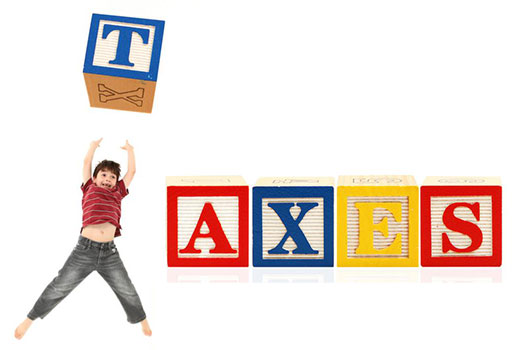
May
Tax Breaks for Parents
First, you can claim any child as a dependent who is younger than 19 or 24 if he or she is a full-time student or disabled. If you’re separated or divorced, only one parent can claim each child. When filing your tax return, each household member gets a $4,050 personal exemption. A family of four, for example, would get $18,200 in exemptions.
Seven tax breaks parents can take advantage of:
Earned Income Tax Credit. This tax credit is for low- and moderate-income taxpayers, including those without children. With one child, the income limits are $39,296 and $44,846. With two, the income limits are $44,648 and $50,198. The credit is $510 with no children, $3,400 with one, $5,616 with two and $6,318 with three or more children. This is a refundable tax credit, which means you could get a refund without paying any taxes.
Child Tax Credit. This credit shaves up to $1,000 off your tax bill for each dependent child under 17 if your income is under $75,000 for a single parent or $110,000 for a couple. For higher-income earners, the credit is cut by $50 for each $1,000 of income above those amounts. This credit is not refundable, so it only counts to the amount of taxes you owe.
American Opportunity Tax Credit. This credit offers up to $2,500 per year per student toward the first four years of college education. To be eligible, your income must be $80,000 or less $160,000 if married filing jointly. Those with incomes up to $90,000 or $180,000 per couple can get a reduced credit. Forty percent of the credit is refundable, even if it’s more than what you owe.
Lifetime Learning Credit. This also is a tax credit for education expenses, but you can’t claim this and the American Opportunity Credit for the same student. You can claim a maximum of 20 percent of the first $10,000 of eligible expense for tuition and fees, or a credit of $2,000.
Child and Dependent Care Credit. This credit is designed for working people, so parents claiming the credit must have earned income or be in school. It’s worth less at higher income levels, but there is no top income limit. It provides a tax credit of 20 to 35 percent depending on income of $3,000 in expenses for one child or $6,000 for more than one child who’s 12 or younger. The credit can also be used toward care for disabled adults in the family.
Single head of household status. Single people with dependents is eligible to file as head of household, which provides a larger standard deduction $9,600 versus $6,300 if you don’t itemize and more favorable tax brackets.
Employ your kids. If you own a business, you can hire your child to do age-appropriate tasks such as filing papers, proofreading documents or providing computer tech support. The first $6,300 earned by each child is tax-free and any additional income is taxed at the child’s tax rate.




